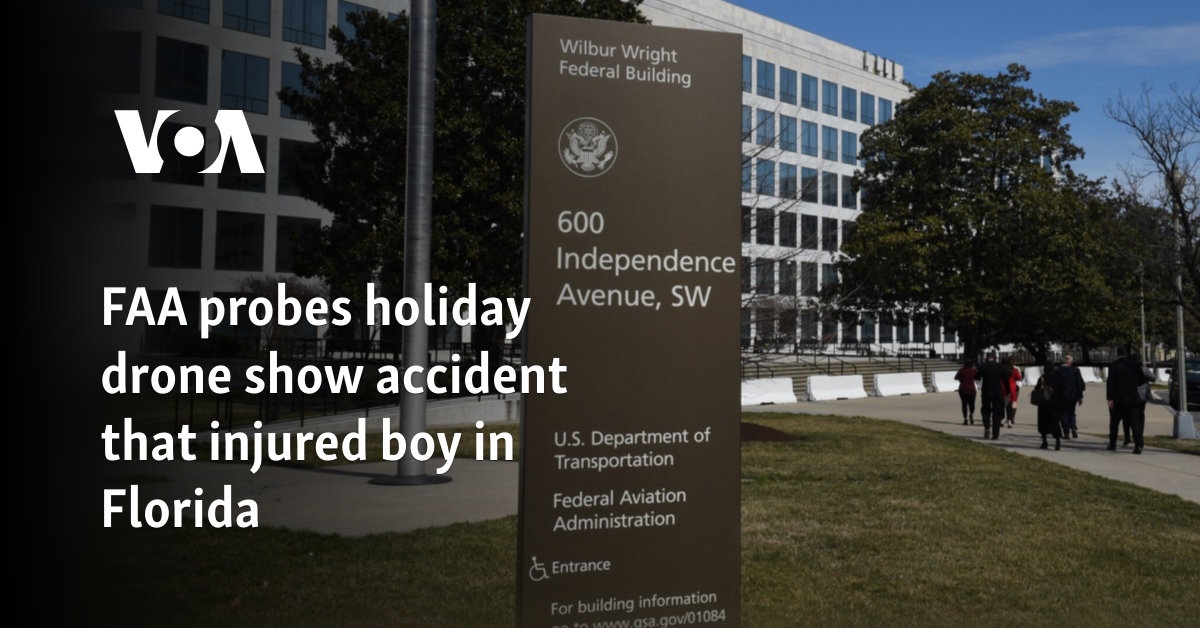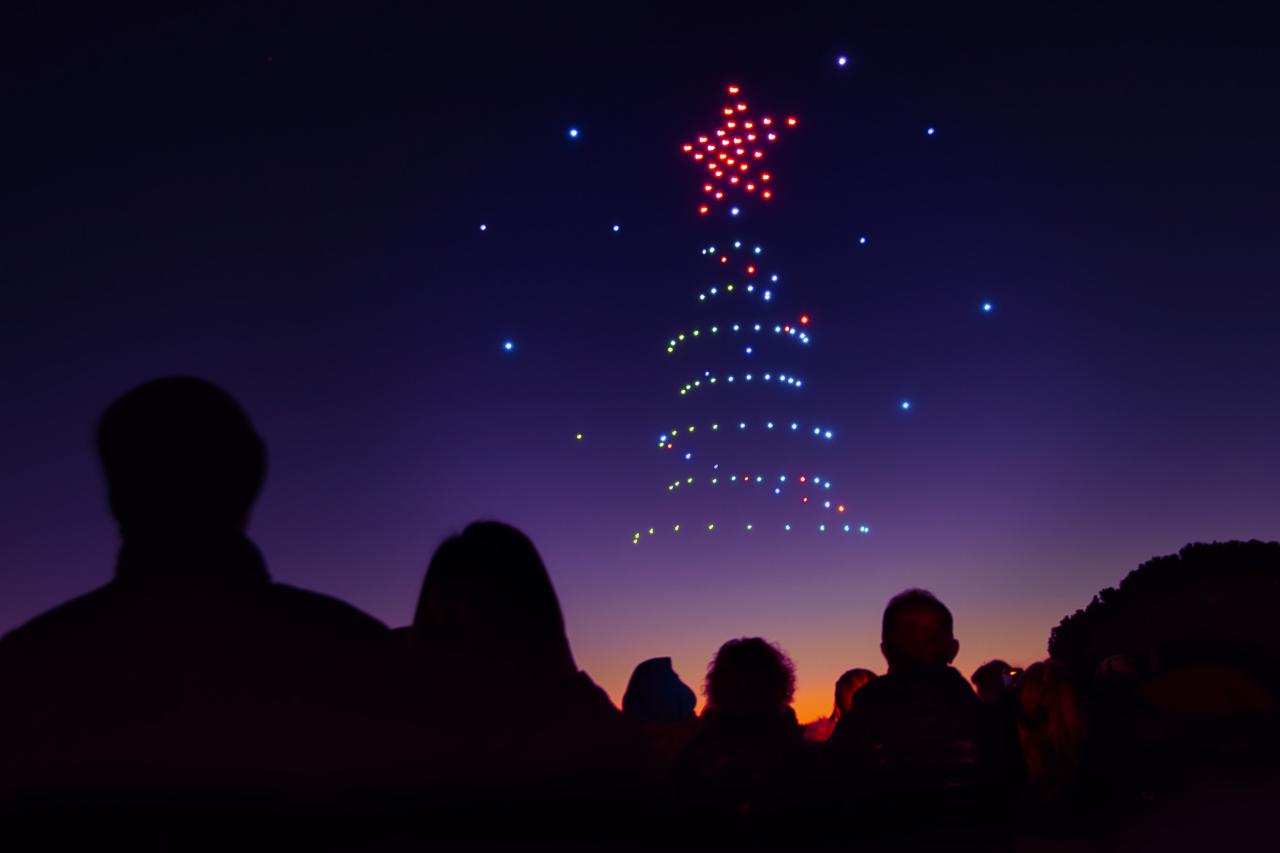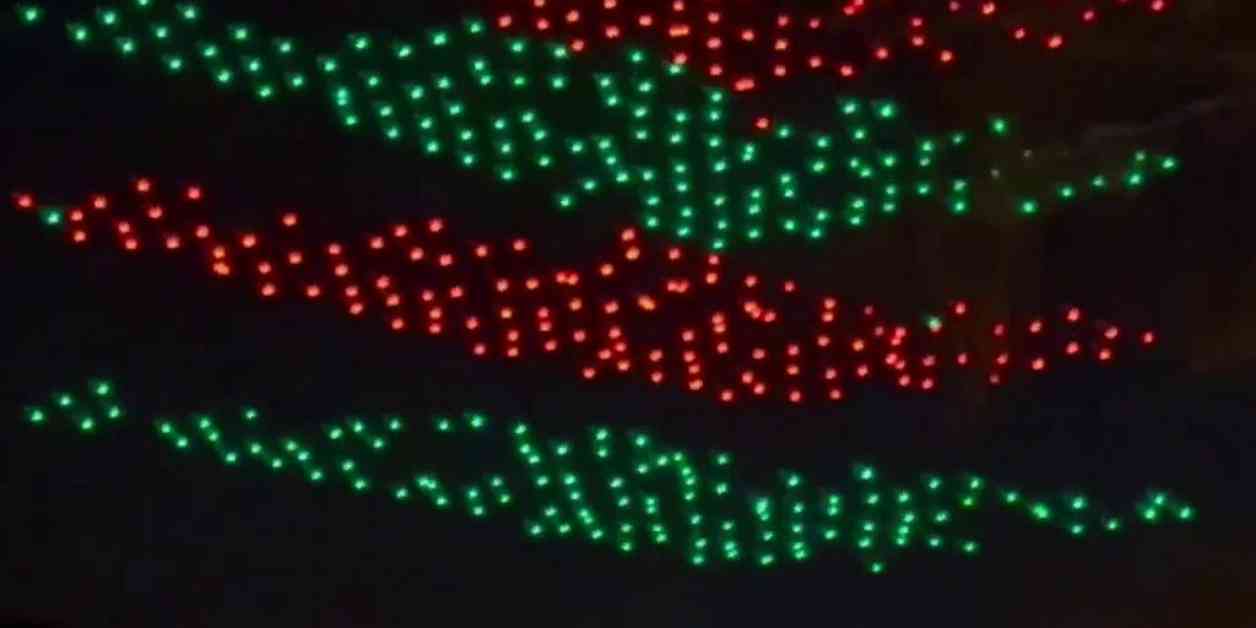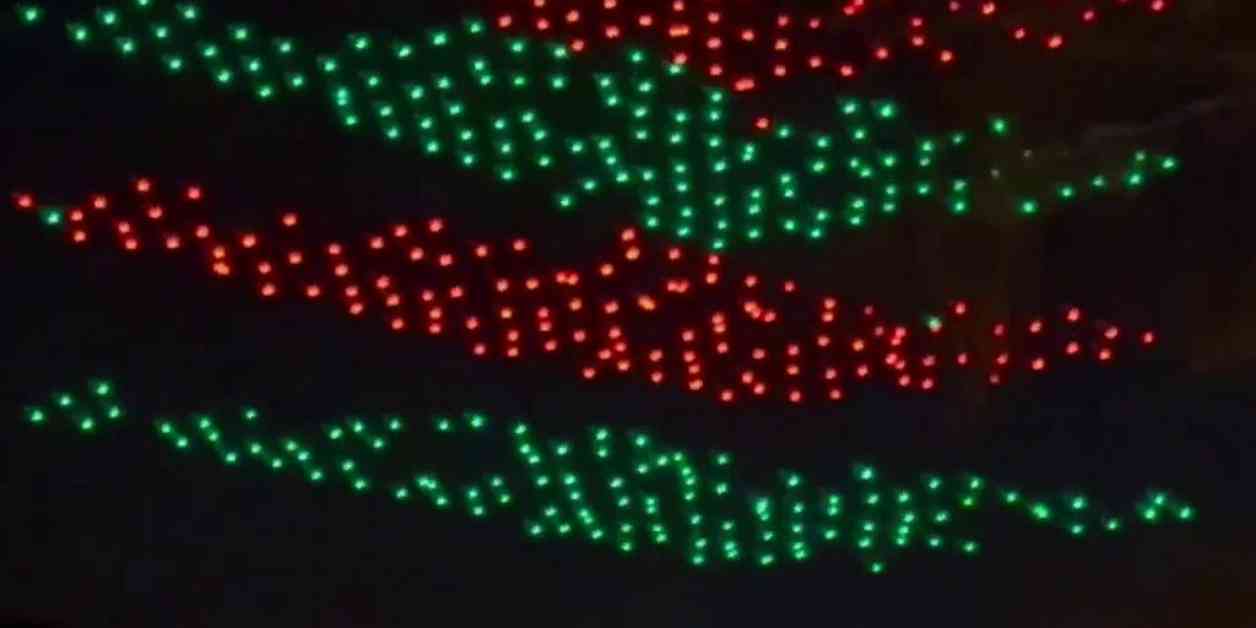Drone show accidents, while relatively rare, highlight critical safety concerns within the rapidly expanding world of drone technology. This exploration delves into the multifaceted causes of these incidents, ranging from technological malfunctions and human error to environmental factors and inadequate safety protocols. Understanding these contributing elements is crucial for improving safety standards and preventing future accidents.
We will examine various types of accidents, from mid-air collisions and system failures to the impact of unpredictable weather conditions. Furthermore, we will analyze existing safety regulations, highlighting areas for improvement and proposing enhanced protocols to mitigate risks. The role of pilot training, technological advancements, and effective post-accident investigation procedures will also be thoroughly investigated.
Drone Show Accidents: A Comprehensive Analysis

Drone shows, while captivating spectacles of light and technology, carry inherent risks. Accidents, though infrequent, can have severe consequences, ranging from minor malfunctions to significant property damage and even potential injury. A thorough understanding of the various factors contributing to these incidents is crucial for improving safety protocols and minimizing future risks.
Types of Drone Show Accidents
Drone show accidents manifest in diverse ways, stemming from a combination of technological, environmental, and human factors. These accidents can be categorized by their root cause and severity.
- Mid-air Collisions: These occur when drones collide with each other during a synchronized flight, often due to GPS interference, software glitches, or pilot error. The severity depends on the speed and size of the drones involved, ranging from minor damage to complete destruction.
- System Failures: Malfunctions in drone components, such as motors, propellers, or flight controllers, can lead to uncontrolled descents or crashes. Battery failures, for example, can cause a sudden loss of power mid-flight. The consequences range from a single drone crash to cascading failures affecting multiple drones.
- Unexpected Weather Events: Strong winds, rain, or even unexpected fog can significantly impact drone stability and control, potentially causing crashes or disrupting the show. The impact can range from minor delays to complete show cancellations.
The frequency and potential consequences vary greatly depending on the type of accident. Mid-air collisions, while potentially catastrophic, are less frequent than individual drone malfunctions due to system failures or adverse weather.
Safety Regulations and Protocols, Drone show accident
Existing regulations for drone shows vary across jurisdictions but generally emphasize pilot certification, pre-flight checks, and operational limitations. However, significant gaps exist in addressing specific scenarios and incorporating advanced safety features.
- Pilot Training and Certification: Rigorous pilot training programs are essential, encompassing both theoretical knowledge and practical flight skills, especially in complex, multi-drone operations. Certification should include proficiency in emergency procedures and risk mitigation strategies.
- Redundancy and Fail-Safes: Improved safety protocols should incorporate redundant systems, such as backup power sources and independent flight controllers, to mitigate the impact of single-point failures. Fail-safe mechanisms, such as automatic landing systems, should be integrated to ensure safe drone recovery in case of malfunctions.
- Gaps in Current Protocols: Many current protocols lack sufficient detail regarding specific emergency procedures, particularly in scenarios involving multiple drone failures or unexpected weather changes. Standardized emergency response plans and communication protocols are needed.
Technological Factors Contributing to Accidents
Technological limitations and vulnerabilities contribute significantly to drone show accidents. Addressing these issues through technological advancements is crucial for enhancing safety.
- GPS Interference and Signal Loss: Interference from other electronic devices or signal blockage can disrupt GPS signals, leading to inaccurate positioning and potential collisions. Redundant positioning systems, such as using multiple GPS receivers or integrating inertial measurement units (IMUs), can mitigate this risk.
- Battery Life and Power Management: Insufficient battery life or inadequate power management can cause sudden power failures, resulting in uncontrolled drone descents. Improved battery technology, along with sophisticated power management systems, are crucial for preventing these incidents.
- Drone Control Systems: The reliability of drone control systems directly impacts safety. Advanced control systems with sophisticated error detection and correction mechanisms, coupled with robust communication links, can significantly reduce the risk of accidents.
Human Error in Drone Show Accidents
Human error, encompassing pilot mistakes, poor decision-making, and inadequate training, significantly contributes to drone show accidents. Implementing comprehensive mitigation strategies is essential.
Drone show accidents, while spectacular when they go right, can have devastating consequences when things go wrong. A recent incident highlights the potential for serious issues; for instance, a news report details a concerning florida drone accident involving a malfunctioning system. This underscores the critical need for rigorous safety protocols and thorough pre-flight checks in all drone operations, especially large-scale drone shows.
Proper planning and execution are paramount to preventing future incidents.
- Pilot Error and Decision-Making: Poor judgment, fatigue, or inadequate situational awareness can lead to critical errors during drone operation. Strict adherence to operational procedures and comprehensive training programs are vital.
- Mitigation Strategies: Implementing checklists for pre-flight inspections, mandatory rest periods for pilots, and improved communication protocols can effectively mitigate human error.
- Pre-Flight Inspection Checklist: A thorough pre-flight checklist should include verifying battery levels, inspecting drone components, checking GPS signal strength, and confirming communication links.
Environmental Factors and Accidents

Environmental conditions can significantly impact drone performance and safety during shows. Effective risk assessment and mitigation strategies are crucial.
- Wind Speed and Direction: Strong winds can destabilize drones, making them difficult to control and increasing the risk of crashes. Wind speed monitoring and show adjustments are necessary.
- Weather Monitoring System: A comprehensive weather monitoring system, incorporating real-time data and predictive models, allows for proactive adjustments to show plans or cancellations based on evolving conditions.
- Unexpected Obstacles: Unexpected obstacles, such as birds or unforeseen structures, can lead to collisions. Pre-show site surveys and ongoing monitoring during the show are crucial for identifying and mitigating such risks.
Post-Accident Procedures and Investigations

Thorough accident investigation procedures are essential for identifying root causes and implementing preventative measures. These investigations should involve data recovery, analysis, and regulatory oversight.
Drone show accidents, while rare, highlight the inherent risks in these spectacular displays. The potential for malfunction is a serious concern, as evidenced by recent incidents. For a sense of the scale and complexity involved, consider the meticulous planning required for a large-scale event like the florida drone show , which underscores the importance of robust safety protocols to prevent such accidents.
Ultimately, minimizing the risk of drone show accidents demands rigorous preparation and adherence to best practices.
| Date | Event | Cause | Recommendation |
|---|---|---|---|
| October 26, 2023 | Mid-air collision of two drones | GPS signal interference | Implement redundant positioning systems |
| November 15, 2023 | Sudden loss of control of a drone | Battery failure | Improve battery technology and implement power management systems |
| December 10, 2023 | Drone crash due to strong winds | Inadequate weather monitoring | Implement a comprehensive weather monitoring system |
| January 5, 2024 | Collision with an unexpected obstacle (bird) | Lack of pre-flight site survey | Conduct thorough pre-flight site surveys and implement obstacle avoidance systems |
Public Safety and Risk Mitigation

Protecting public safety is paramount during drone shows. Comprehensive risk mitigation strategies and clear communication protocols are crucial.
- Minimizing Public Exposure: Establishing designated viewing areas, using safety barriers, and limiting the show’s proximity to populated areas can minimize public exposure to risks.
- Emergency Procedures: Clear emergency procedures should be established, including evacuation routes and communication protocols for alerting the public in case of an accident.
- Public Safety Plan: A detailed public safety plan should be developed for each drone show, including designated emergency personnel, communication channels, and contingency plans for various scenarios.
Ultimately, ensuring the safety of drone shows requires a multi-pronged approach. By addressing technological limitations, enhancing pilot training, strengthening safety regulations, and implementing robust post-accident procedures, we can significantly reduce the risk of future incidents. A collaborative effort involving technology developers, regulatory bodies, and drone operators is essential to establish a safer environment for both spectators and operators alike.
Drone show accidents, while rare, highlight the inherent risks involved in these spectacular displays. Understanding these risks is crucial, and researching successful events like those showcased in a recent article on florida drone show can offer valuable insights into safety protocols. Ultimately, minimizing the chance of a drone show accident requires meticulous planning and rigorous adherence to safety regulations.
Continuous improvement and a proactive safety culture are paramount in navigating the evolving landscape of drone technology and ensuring the responsible enjoyment of these spectacular aerial displays.
Clarifying Questions: Drone Show Accident
What is the most common cause of drone show accidents?
While various factors contribute, pilot error, including inadequate training and poor decision-making, frequently plays a significant role.
What insurance coverage is typically required for drone shows?
Liability insurance is crucial to cover potential damages or injuries resulting from accidents. Specific requirements vary by location and the scale of the show.
How are drone shows regulated differently from other forms of public entertainment?
Regulations often focus on airspace management, pilot certification, and the mitigation of risks associated with the operation of multiple drones simultaneously in close proximity.
What are the long-term consequences of a major drone show accident?
Besides immediate injuries and property damage, a major accident could lead to stricter regulations, increased insurance costs, and a potential decline in public confidence in drone shows.
